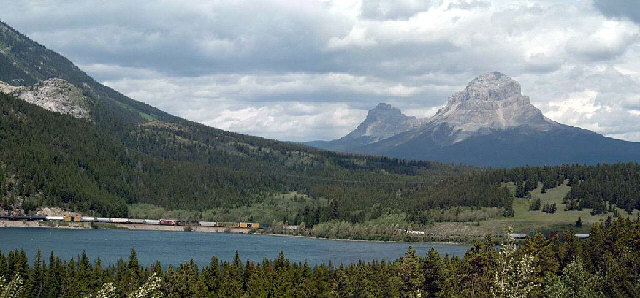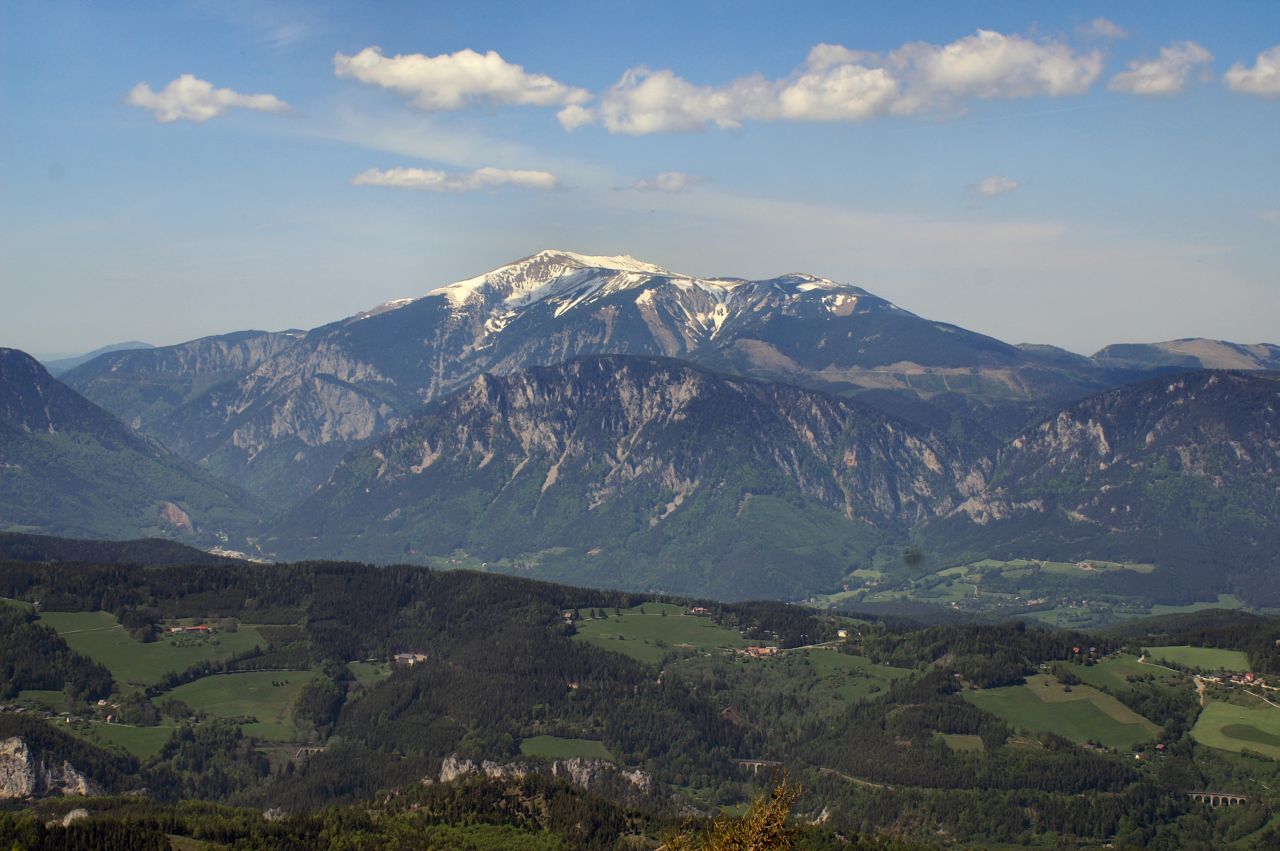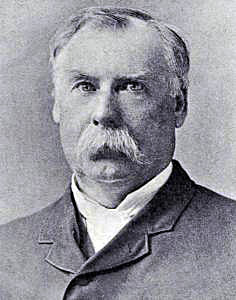|
Andy Good Peak
Andy Good Peak is located just south of Crowsnest Pass on the Canadian provincial boundary between Alberta and British Columbia on the Continental Divide. It was named in 1916 after Andy Good, a hotel owner in nearby Crowsnest Pass whose bar straddled the provincial border. See also *List of peaks on the Alberta–British Columbia border Gallery File:McLaren, Andy Good, Parrish.jpg, Mt. McLaren, with Andy Good Peak (behind), and Mt. Parrish (right) File:Flathead Range Crowsnest Pass area.jpg, Flathead RangeLeft to rightː Mount Coulthard, Andy Good Peak, Mount Parrish, Chinook Peak Chinook Peak is a summit located on the eastern border of Mount Rainier National Park. It is also on the shared border of Pierce County, Washington, Pierce County and Yakima County, Washington, Yakima County in Washington (U.S. state), Washingto .... References {{Canadian Rockies, state=collapsed Two-thousanders of Alberta Two-thousanders of British Columbia Canadian Rockies Kootenay ... [...More Info...] [...Related Items...] OR: [Wikipedia] [Google] [Baidu] |
Mount Parrish
Mount Parrish is a mountain summit located in Alberta, Canada. Description Mount Parrish is situated eight kilometers southwest of the town of Coleman in the Crowsnest Pass area and can be seen from Highway 3, the Crowsnest Highway. It is part of the Flathead Range which is a subset of the Canadian Rockies. The peak is set one kilometer east of the Continental Divide, in Castle Wildland Provincial Park. Precipitation runoff from the mountain drains into tributaries of the nearby Crowsnest River. Topographic relief is significant as the summit rises 1,190 meters (3,900 feet) above the river in 5 kilometers (3.1 miles). Chinook Peak is to the northwest of Mt. Parrish and the nearest higher neighbor is Andy Good Peak, to the south. History Mount Parrish is named after Sherman Parrish, an early settler in the Crowsnest Pass area in 1898.Dave Birrell (2000), ''50 Roadside Panoramas in the Canadian Rockies'', Rocky Mountain Books, , p. 138 He homesteaded at th ... [...More Info...] [...Related Items...] OR: [Wikipedia] [Google] [Baidu] |
Crowsnest Pass
Crowsnest Pass (sometimes referred to as Crow's Nest Pass, french: link=no, col du Nid-de-Corbeau) is a low mountain pass across the Continental Divide of the Canadian Rockies on the Alberta–British Columbia border. Geography The pass is located in southeast British Columbia and southwest Alberta, and is the southernmost rail and highway route through the Canadian Rockies. It is the lowest-elevation mountain pass in Canada south of the Yellowhead Pass (); the other major passes, which are higher, being Kicking Horse Pass (), Howse Pass () and Vermilion Pass (). Crowsnest Pass comprises a valley running east–west through Crowsnest Ridge. On the Alberta side, the Crowsnest River flows east from Crowsnest Lake, eventually draining into the Oldman River and ultimately reaching Hudson Bay via the Nelson River. Summit Lake on the British Columbia side drains via three intermediary creeks into the Elk River, which feeds into the Kootenay River, and finally into the Co ... [...More Info...] [...Related Items...] OR: [Wikipedia] [Google] [Baidu] |
Two-thousanders Of British Columbia
Two-thousanders are mountains that have a height of at least 2,000 metres above sea level, but less than 3,000 metres. The term is used in Alpine circles, especially in Europe (e.g. German: ''Zweitausender''). The two photographs show two typical two-thousanders in the Alps that illustrate different types of mountain. The Säuling (top) is a prominent, individual peak, whereas the Schneeberg (bottom) is an elongated limestone massif. In ranges like the Allgäu Alps, the Gesäuse or the Styrian-Lower Austrian Limestone Alps the mountain tour descriptions for mountaineers or hikers commonly include the two-thousanders, especially in areas where only a few summits exceed this level. Examples from these regions of the Eastern Alps are: * the striking Nebelhorn (2,224 m) near Oberstdorf or the Säuling (2,047 m) near Neuschwanstein, * the Admonter Reichenstein (2,251 m), Eisenerzer Reichenstein (2,165 m), Großer Pyhrgas (2,244 m) or Hochtor (2,369&n ... [...More Info...] [...Related Items...] OR: [Wikipedia] [Google] [Baidu] |
Two-thousanders Of Alberta
Two-thousanders are mountains that have a height of at least 2,000 metres above sea level, but less than 3,000 metres. The term is used in Alpine circles, especially in Europe (e.g. German: ''Zweitausender''). The two photographs show two typical two-thousanders in the Alps that illustrate different types of mountain. The Säuling (top) is a prominent, individual peak, whereas the Schneeberg (bottom) is an elongated limestone massif. In ranges like the Allgäu Alps, the Gesäuse or the Styrian-Lower Austrian Limestone Alps the mountain tour descriptions for mountaineers or hikers commonly include the two-thousanders, especially in areas where only a few summits exceed this level. Examples from these regions of the Eastern Alps Eastern Alps is the name given to the eastern half of the Alps, usually defined as the area east of a line from Lake Constance and the Alpine Rhine valley up to the Splügen Pass at the Alpine divide and down the Liro River to Lake Como in the ... [...More Info...] [...Related Items...] OR: [Wikipedia] [Google] [Baidu] |
Chinook Peak (Alberta)
Chinook Peak is a mountain summit located in the Canadian Rockies of Alberta, Canada. Description Chinook Peak is situated 10 kilometers southwest of the town of Coleman in the Crowsnest Pass area and can be seen from Highway 3, the Crowsnest Highway. It is set on land managed by Castle Wildland Provincial Park. Precipitation runoff from the mountain drains into tributaries of the nearby Crowsnest River. Topographic relief is significant as the summit rises 1,300 meters (4,265 feet) above the river in 4.5 kilometers (2.8 miles). Sentry Mountain is to the northwest and the nearest higher neighbor is Andy Good Peak, to the southeast on the Continental Divide. History Chinook Peak was named by Jim Kerr, a resident of the Crowsnest Pass. Jim knew that when snow started blowing from the top from the west, a chinook wind would soon follow. When mapping this area, Dr. Raymond A. Price of the Geological Survey of Canada mapping this area, used this name to identify the peak.Aphro ... [...More Info...] [...Related Items...] OR: [Wikipedia] [Google] [Baidu] |
Mount McLaren
Mount McLaren is a mountain summit located in Alberta, Canada. Description Mount McLaren is situated six kilometers southwest of the town of Coleman in the Crowsnest Pass area and can be seen from the Crowsnest Highway (Highway 3). It is part of the Flathead Range which is a subset of the Canadian Rockies. The peak is set two kilometers east of the Continental Divide, in Castle Wildland Provincial Park. Precipitation runoff from the mountain drains into Star and North York creeks which are tributaries of the nearby Crowsnest River. Topographic relief is significant as the summit rises over 945 meters (3,100 feet) above the river in 5 kilometers (3.1 miles). Chinook Peak is to the west of Mt. McLaren and the nearest higher neighbor is Mount Parrish, to the southwest. History Mount McLaren is named after Peter McLaren (1833–1919), a Canadian politician and Senator from Perth, Ontario.Dave Birrell (2000), ''50 Roadside Panoramas in the Canadian Rockies'' ... [...More Info...] [...Related Items...] OR: [Wikipedia] [Google] [Baidu] |
List Of Peaks On The Alberta–British Columbia Border
This is a list of peaks on the Alberta–British Columbia border, being the spine of the Continental Divide from the Canada–United States border to the 120th meridian, which is where the boundary departs the Continental Divide and goes due north to the 60th parallel. Peaks are listed from north to south and include the four peaks not on the Continental Divide but which are on the 120th Meridian, stretching approximately due north from Intersection Mountain, which as its name implies is located at the intersection of the Divide and the Meridian. See also *List of Boundary Peaks of the Alaska-British Columbia/Yukon border *Extreme points of British Columbia References {{DEFAULTSORT:List Of Peaks On The British Columbia-Alberta Border * * Peaks Peaks Peak or The Peak may refer to: Basic meanings Geology * Mountain peak ** Pyramidal peak, a mountaintop that has been sculpted by erosion to form a point Mathematics * Peak hour or rush hour, in traffic conges ... [...More Info...] [...Related Items...] OR: [Wikipedia] [Google] [Baidu] |
Continental Divide Of The Americas
The Continental Divide of the Americas (also known as the Great Divide, the Western Divide or simply the Continental Divide; ) is the principal, and largely mountainous, hydrological divide of the Americas. The Continental Divide extends from the Bering Strait to the Strait of Magellan, and separates the watersheds that drain into the Pacific Ocean from those river systems that drain into the Atlantic and (in northern North America) Arctic oceans (including those that drain into the Gulf of Mexico, the Caribbean Sea and Hudson Bay). Although there are many other hydrological divides in the Americas, the Continental Divide is by far the most prominent of these because it tends to follow a line of high peaks along the main ranges of the Rocky Mountains and Andes, at a generally much higher elevation than the other hydrological divisions. Geography Beginning at the westernmost point of the Americas’ mainland (Cape Prince of Wales, just south of the Arctic Circle), the Conti ... [...More Info...] [...Related Items...] OR: [Wikipedia] [Google] [Baidu] |
National Topographic System
The National Topographic System or NTS is the system used by Natural Resources Canada for providing general purpose topographic maps of the country. NTS maps are available in a variety of scales, the standard being 1:50,000 and 1:250,000 scales. The maps provide details on landforms and terrain, lakes and rivers, forested areas, administrative zones, populated areas, roads and railways, as well as other man-made features. These maps are currently used by all levels of government and industry for forest fire and flood control (as well as other environmental issues), depiction of crop areas, right-of-way, real estate planning, development of natural resources and highway planning. To add context, land area outside Canada is depicted on the 1:250,000 maps, but not on the 1:50,000 maps. History Topographic mapping in Canada was originally undertaken by many different agencies, with the Canadian Army’s Intelligence Branch forming a survey division to create a more standardized mappi ... [...More Info...] [...Related Items...] OR: [Wikipedia] [Google] [Baidu] |
Flathead Range (Canada)
The Flathead Range is a mountain range of the Canadian Rockies in Alberta and British Columbia, Canada. It is located on the Continental Divide, east of Fernie, in the Kootenay Land District. It stretches lengthwise north–south from Crowsnest Pass to North Kootenay Pass. The range's toponym was officially adopted on 30 June 1912 by the Geographic Board of Canada, and was named in association with the Flathead River. The highest peak is Mount Ptolemy, with an elevation of . __NOTOC__ Summits See also * Ranges of the Canadian Rockies The Canadian Rockies are a segment of the North American Rocky Mountains found in the Canadian provinces of Alberta and British Columbia. List of ranges There is no universally accepted hierarchical division of the Canadian Rockies into subranges. ... References External links * Flathead Rangeweather forecast {{Canadian Rockies, state=collapsed Ranges of the Canadian Rockies Mountain ranges of Alberta Mountain ranges of British Columbia ... [...More Info...] [...Related Items...] OR: [Wikipedia] [Google] [Baidu] |
Kootenay Land District
The Kootenay Land District is a cadastral survey subdivision of the province of British Columbia, Canada, created with rest of those on Mainland British Columbia via the Lands Act of the Colony of British Columbia (1858–1866), Colony of British Columbia in 1860. The British Columbia government's BC Names system, a subdivision of GeoBC, defines a land district as "a territorial division with legally defined boundaries for administrative purposes" All land titles and surveys use the Land District system as the primary point of reference, and entries in BC Names for placenames and geographical objects are so listed. Description The land district comprises all those parts of the Kootenay River and Columbia River basins in the southeast corner of the province, excepting the drainages of the Okanogan River, Okanagan, Granby River, Granby, Sanpoil River, Sanpoil and Kettle River (Columbia River), Kettle Rivers, i.e. all those sub-basins of the Columbia on the west and south of the summ ... [...More Info...] [...Related Items...] OR: [Wikipedia] [Google] [Baidu] |
British Columbia
British Columbia (commonly abbreviated as BC) is the westernmost province of Canada, situated between the Pacific Ocean and the Rocky Mountains. It has a diverse geography, with rugged landscapes that include rocky coastlines, sandy beaches, forests, lakes, mountains, inland deserts and grassy plains, and borders the province of Alberta to the east and the Yukon and Northwest Territories to the north. With an estimated population of 5.3million as of 2022, it is Canada's third-most populous province. The capital of British Columbia is Victoria and its largest city is Vancouver. Vancouver is the third-largest metropolitan area in Canada; the 2021 census recorded 2.6million people in Metro Vancouver. The first known human inhabitants of the area settled in British Columbia at least 10,000 years ago. Such groups include the Coast Salish, Tsilhqotʼin, and Haida peoples, among many others. One of the earliest British settlements in the area was Fort Victoria, established ... [...More Info...] [...Related Items...] OR: [Wikipedia] [Google] [Baidu] |






